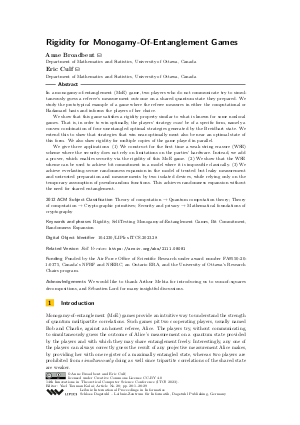LIPIcs.ITCS.2023.28.pdf
- Filesize: 0.96 MB
- 29 pages

 Creative Commons Attribution 4.0 International license
Creative Commons Attribution 4.0 International license







Feedback for Dagstuhl Publishing